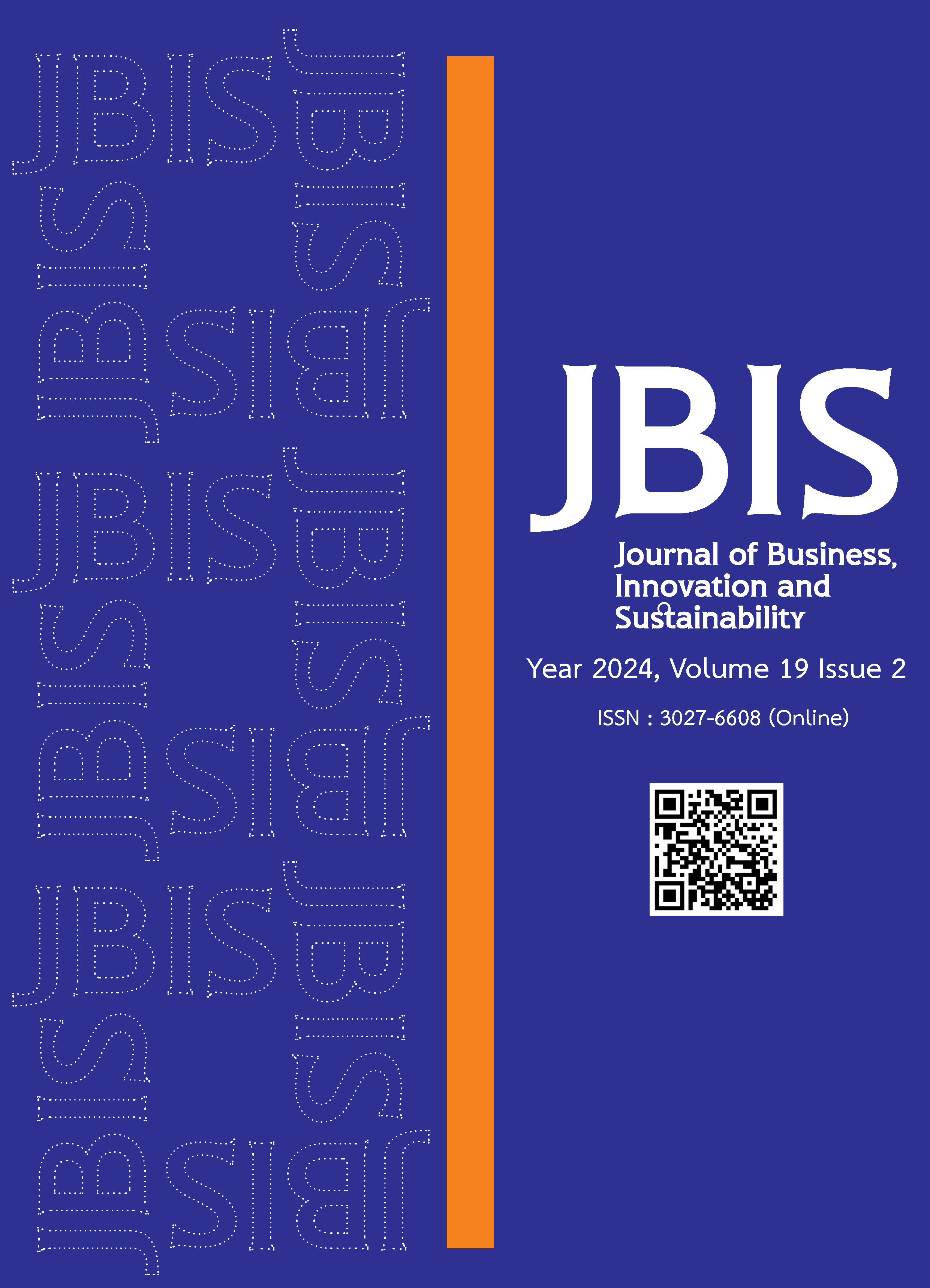Effect of Technological Change on Economic Growth in the Eastern Economic Corridor: The Case Study of Chachoengsao Province, Thailand
Main Article Content
บทคัดย่อ
The purpose of this research aims to study changes in technology in Chachoengsao Province that affect the economic growth of Chachoengsao Province and analyze the factors that determine technological changes in Chachoengsao Province. It’s using historical annual data from 1992-2022, which is quantitative analysis. It’s using an econometric model in the form of a multiple regression equation. The research found that the study of technological change has a positive impact on the economic growth of Chachoengsao Province by the total economic sector is equal to 0.0043 percent and there is difference in each production sector. However, the production branch has the highest rate of technological change that is the mining of metal and non-metallic minerals are equal to 0.3998, followed by the commerce sector, service sector, construction, repair and demolition sector, transportation, warehousing and transportation sector and the handicraft industry sector with technological change rates are equal to 0.0791, 0.0507, 0.0372, 0.0142 and 0.0088, respectively. Moreover, the manufacturing sector in the field of public utilities and sanitation and the fields of agriculture, hunting, and fishing had a rate of change in the negative direction are equal to -0.0131 and -0.0080, respectively. As for the factors affecting the change in growth of the entire economic sector as a whole and every branch of production uses capital factors more than labor factors. As for the analysis of the influence of factors that determine technological change results in each production sector differently as well. It was found that the investment promotion factors of Chachoengsao Province and the factors of the number of unemployed workers in Chachoengsao Province it has the most relationship in the same direction and the factors of foreign direct investment at the country level, national technology and patent fee factors, national inflation factors and the factor of national research and development expenses has an opposite relationship with the value of output in both of economic sectors as a whole and each production sector is the most. So, this research provides recommendations to the government and related agencies by giving priority to workers with a high level of education and solving the problem of decreasing unemployment rates within Chachoengsao Province. Including providing benefits and support for foreign investment and domestic entrepreneurs in order to achieve growth in both of all economic sectors and each production sector at Chachoengsao provincial and national levels.
Article Details

อนุญาตภายใต้เงื่อนไข Creative Commons Attribution-NonCommercial-NoDerivatives 4.0 International License.
เอกสารอ้างอิง
Aujirapongpan, S., Vadhanas, P., Chandrachai, A. and Cooparat, P. (2010). Innovation: Meaning, types and importance towards being an entrepreneur. Journal of Business Administration, 33(128), 49-65.
Bank of Thailand. (2023). Statistics and published information. Retrieved October 10, 2023, from https://www.bot.or.th/th/statistics.html
Budget Bureau. (2023). The report shows the budget allocation plan. Fiscal year 2023, Chachoengsao Province. Retrieved October 8, ฃ 2023, from https://www.bb.go.th/web/budget/province/province_bud66/PDF/plan/bis61rchang2001_03240000.pdf
Bramahitadata, N. (2015). Impact of saving rate on economic growth in Thailand. Master thesis, M.B.E., Kasetsart University, Bangkok.
Chachoengsao Provincial Statistical Office. (2023). Chachoengsao province statistical report. Retrieved October 9, 2023, from https://chchsao.nso.go.th/reports-publications/provincial-statistics-report.html
Charoenlert, W. and Atiwanichayapong, N. (2003). Complete research report development of the welfare system for the poor and underprivileged: Labor groups in the industrial sector. Bangkok: Faculty of Economics Political Economy Book Center Chulalongkorn
University Comptroller General's Department. (2022). Chachoengsao province economic estimate report. Retrieved October 9, 2023, from https://www.cgd.go.th/cs/Satelliteblobcol=urldata&blobkey=id&blobtable=MungoBlobs&blobwhere=1438182302816&ssbinary=true
Department of Internal Trade. (2023). Various statistical information. Retrieved October 5, 2023, from https://www.dit.go.th/Content.aspx?m=109
Kasrisom, A. (2019). Effect of technology and impact of the targeted industric under Thailand 4.0 policy in the eastern special development zone. Master thesis, M.Econ., Kasetsart University, Bangkok.
Ministry of Labor. (2023). Provincial labor situation. Retrieved October 9, 2023, from http://analytic.nlic.mol.go.th/analytics/saw.dllDashboard
Office of the National Economic and Social Development Council. (2023a). Capital stock of Thailand (B/S). Retrieved October 9, 2023, from https://www.nesdc.go.th/main.php?filename=capital_stock
Office of the National Economic and Social Development Council. (2023b). Gross regional and Provincial Product (GPP). Retrieved October 9, 2023, from https://www.nesdc.go.th/main.php?filename=gross_regional
Petprasert, N. (2003). Complete research reports an overview of the development of the welfare system for the poor and underprivileged people in Thai society. Bangkok: Faculty of Economics Political Economy Book Center Chulalongkorn University
Santipholwut, S. (2015). Economic development theory and case studies (2nd ed.). Bangkok: Peimthong Printing & Design Company Limited.
Tohsa, J. (2005). Effects of technological change on economic growth and it’s determinant. Master thesis, M.Econ., Chulalongkorn University, Bangkok.
Wangsukij, C. (1996). A study of the technological catch up of Thai. Master thesis, M.B.E., Chulalongkorn University, Bangkok.


